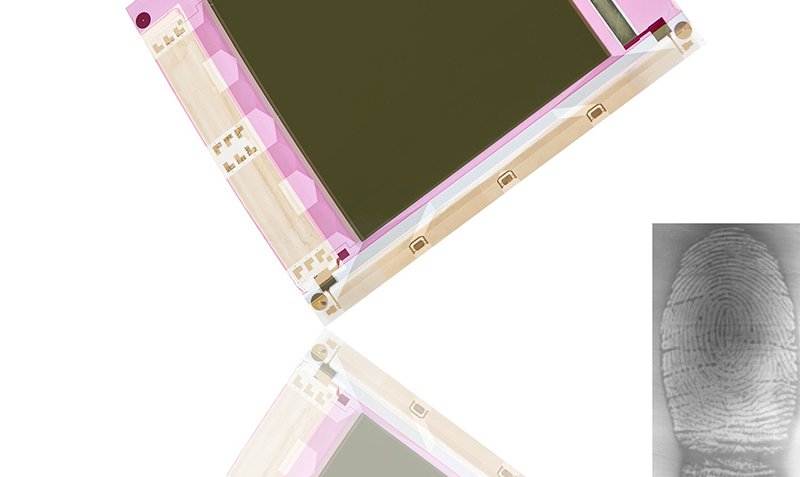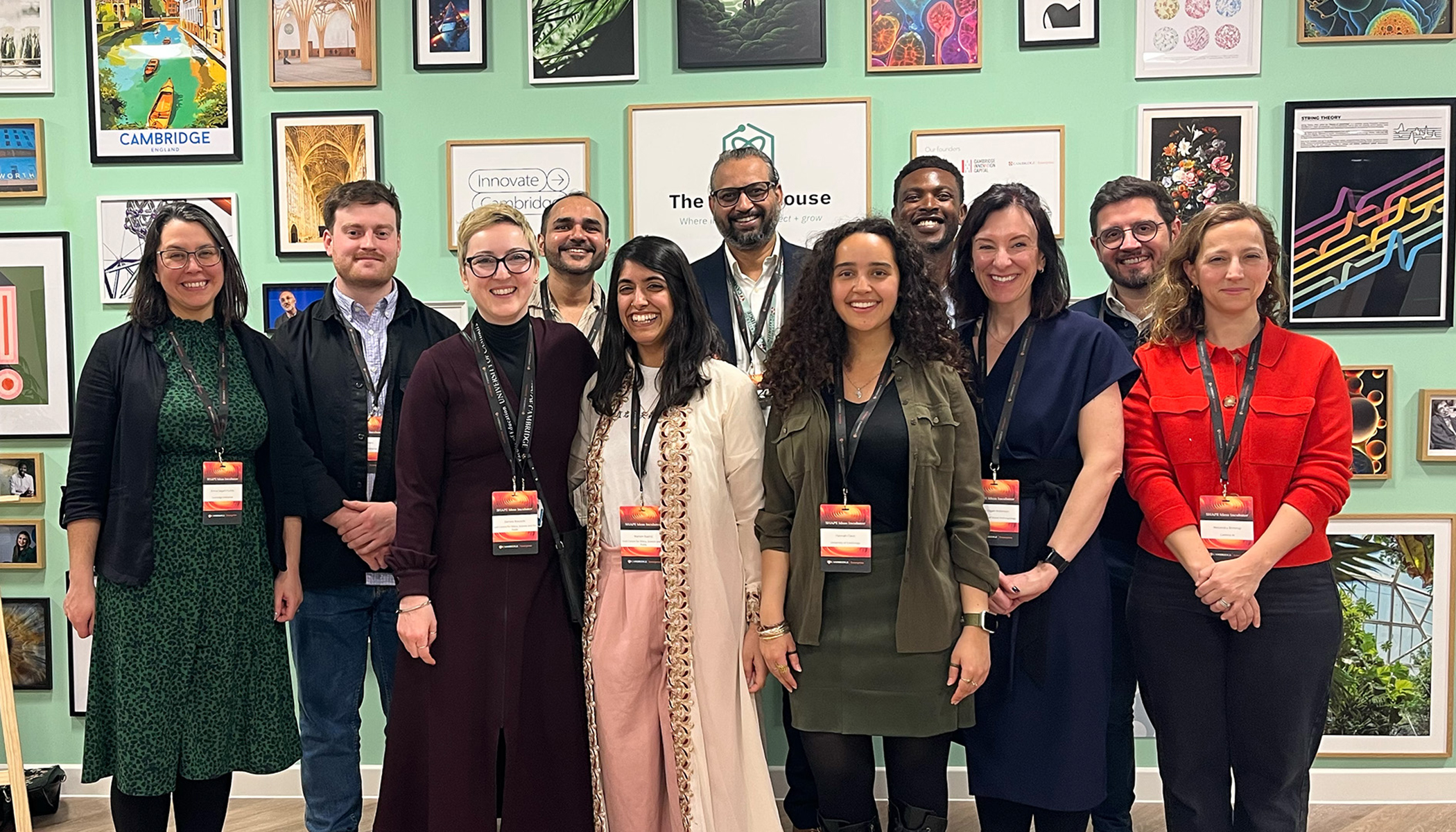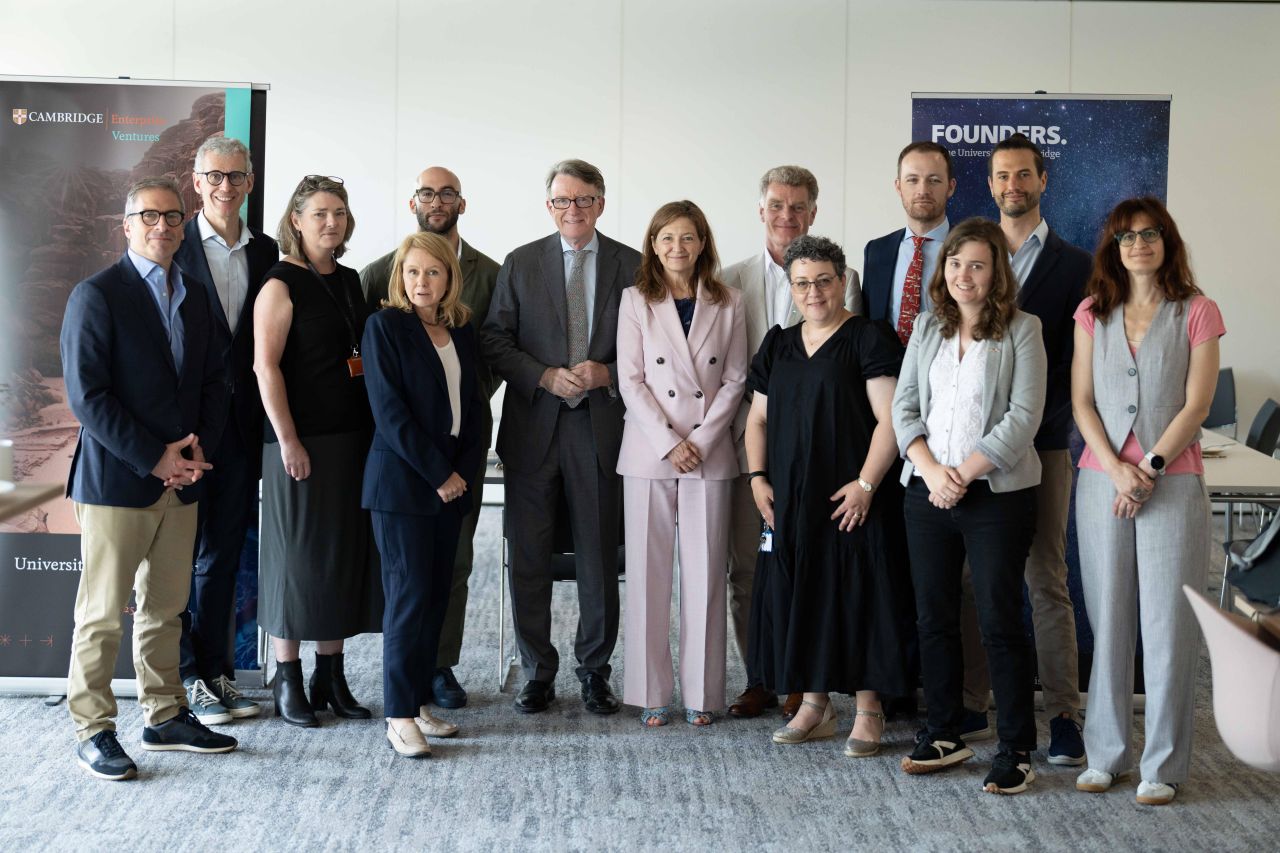FlexEnable, the leader in the development and industrialisation of flexible organic electronics, and ISORG, the pioneer in organic photodetectors and large area image sensors in printed electronics, have revealed the world’s first large area flexible fingerprint sensor on plastic designed for biometric applications.
With an 8.6 cm x 8.6 cm active area, 84µm pitch (78µm pixel size with 6µm spacing) and 1024 x 1024 = 1048576 pixel resolution, this revolutionary flexible sensor is only 0.3 mm thick and can operate in visible and near infra-red up to wavelengths of 900 nm. The technology is capable of measuring not only the fingerprint, but also the configuration of veins in the fingers, providing additional security versus that of a surface fingerprint alone. Cambridge Enterprise has supported the formation and development of FlexEnable, formerly Plastic Logic, since its founding in 2000.
This breakthrough development will spark the creation of next-generation products in biometrics.
Jean-Yves Gomez
This new sensor breakthrough has been achieved by deposition of organic printed photodetectors (OPD), pioneered by ISORG, onto a plastic organic thin-film transistor (OTFT) backplane, developed by FlexEnable, to create a flexible fingerprint sensor that is ultra-thin, light, robust and lensless. The large label-thin sensing area can be applied to almost any surface – and even wrapped around the objects in our daily lives that we typically come into contact with – such as a car steering wheel that recognises the driver as soon as the wheel is touched, or a credit card with integrated biometric detection that does not compromise current form factors. The addition of vein sensing on top of fingerprint sensing provides a second level of security, since each user’s vein pattern in the finger is unique and requires the user to be alive for detection to be successful.
Large area fingerprint sensors allow more information to be collected – which directly provides better performance on two key metrics compared to smaller sensor areas – higher security and lower false rejection rate. However, large area fingerprint sensors become prohibitively expensive for many applications, when conventional silicon technology is used. In contrast, flexible plastic fingerprint sensors bring cost advantages to large area manufacturing due to the low temperature and printing process on plastic being employed. Moreover, fingerprint sensors made of plastic have similar optical performances to conventional optical fingerprint sensors such as sensitivity, linearity, and low noise, but without the need for expensive and bulky optics.
Chuck Milligan, CEO of FlexEnable, said: “FlexEnable’s ground-breaking flexible electronics technology in combination with ISORG’s unrivalled expertise in OPDs and large area image sensors brings game-changing capabilities for biometric detection that can be applied to almost any surface – anything from door handles to wrists. For example, imagine a mobile device whose surface or edges know who is holding or touching the device. Such capabilities are viable because of the flexibility, thinness, and much lower cost per unit area compared to silicon area sensors.”
Jean-Yves Gomez, CEO of ISORG, said: “This breakthrough development will spark the creation of next-generation products in biometrics. No other solution can offer large area sensing as well as finger print and veins recognition while being flexible, light and robust. Moreover, our team is able to provide reference design as well as image improvement algorithms and illumination solutions to ease the sensor integration into new applications.”
Industry partners interested in collaborating with FlexEnable and ISORG to bring large area flexible fingerprint and vein sensors to the market should send an email to imaging@flexenable.com.
Tags: electronics, fingerprint, flexenable, flexible, organic, plastic logic, sensor











